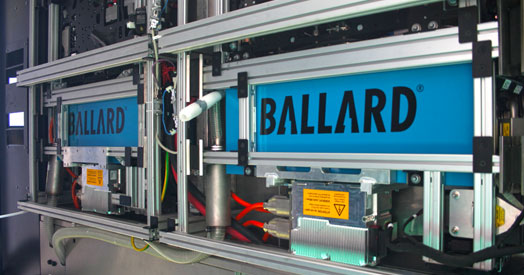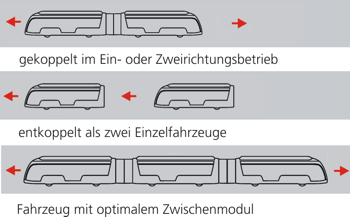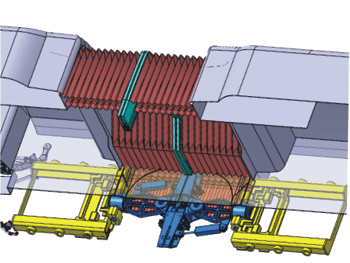Vehicle Structure
The 24-m bidirectional train consists of two 12-m low-floor vehicles that can be coupled in the rear. Its width is 2.55 meters. The three axles that are driven by asynchronous motors can be steered separately with the help of electro-hydraulics. Thus, the vehicle train’s swept path and its clearance gauge are kept at a minimum. The AutoTram® is able to reach a maximum speed of 70 km/h. The dimensions and equipment of the basic vehicle comply largely to the approval regulations for buses in public transport.
Propulsion Concept
The partially emission-free hybrid propulsion system consists of a compact combustion engine and a storage module for electric energy (batteries and high-performance capacitors). Emission-free operation is possible for short distances of 2 to 3 kilometers. Depending on the route profile, up to 20 percent of the braking energy can be recuperated during fully electric operation.
Coupling and Gangway Module
All 12-m vehicles can be combined due to their axisymmetrical coupling module. If desired, middle segments can be inserted to form a 36-m train. The coupling procedure is automated. After decoupling, the joint is retracted into the vehicle floor.
Assisted Lane Guidance
Although the drivers are responsible for driving the vehicle, a lane guidance system offers support for lane adherence, precise approaching of the stops and bidirectional driving. This advanced driver assistance system is realized by combining DGPS and video images.


